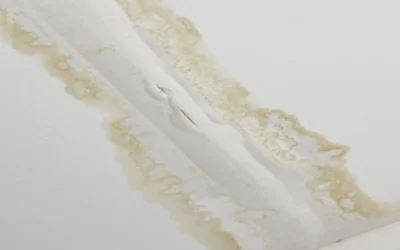When moving into, or vacating a property, it helps to have things crystal clear as to whose responsibility it is to fix or maintain damage on the property.
There is inevitable wear and tear on all properties and appliances over time when a property is rented, it is a normal part of life. With expected wear and tear, each lease agreement that is signed must clearly outline expectations and responsibilities of the homeowner and the tenant. These agreements are there to protect both parties and increase the chance of an amicable, mutually beneficial arrangement.
An important part of protecting a tenant and the homeowner is an entry report. This document is worth investing time into, to get an accurate depiction of the state of the property upon moving in, therefore impacting what the state of the property is when the lease ends or when the tenant vacates. This will serve as the primary evidence when a dispute arises. In rental agreements, you will inevitably find the term ‘fair wear and tear’. So, how do we define this particular statement?
Whether you are a homeowner or a tenant, we’ve come up with a simpler detailed guide to understanding what this term means and what lies outside this term.

Who, What, Wear and Tear, in a Nutshell
When leasing a property, it is expected from tenants to leave the property when vacating, as much as possible, in the same condition as when they moved in, fair wear and tear excepted. Grounds are set regarding the scope of the tenants’ rights.
But where do landlords and tenants draw the lines of the boundary of what fair wear and tear is and whose responsibility it is to repair and maintain things outside of normal wear and tear?
Suffice to say, “wear and tear” is a vague phrase. In layman’s terms, wear and tear refers to expected depreciation and impact on goods and materials from everyday use of a property. Everything that has been used on a regular basis will eventually show signs of deterioration, whether it’s a house, appliances or even sturdy things like a driveway. Different factors like ageing, the weather, and daily usage are the major contributors to wear and tear.
In a rental property, the daily activities of the tenants are the main causes of depreciation, for example a dishwasher that gets used on the daily. Not to be confused with abuse or neglect, wear and tear is a natural occurrence, not caused on purpose. Laws and agreements may vary between states and territories, but in general, this definition of wear and tear is widely accepted. By “fair”, what this refers to is the cause of the damage or situation at hand. Given the benefit of the doubt, for damage to be considered to be reasonable, it should have occurred in the event of fair use of the property.
Examples of fair wear and tear
- Small scuffs on the walls
- Sun faded areas
- Loose door hinges or screws as a result of use
- Worn out kitchen tops as the result of use
- Indentations on furniture or appliances as the result of normal usage
Dirt, grime, and grease are not counted under wear and tear that is why entry and exit reports are vital to be vigilant about, whether to protect yourself as a tenant or if you are a homeowner, your property manager should be protecting your assets through a thorough entry and exit report and not let things ‘slide’ between inspections and between tenants. Abuse, neglect, or accidental damage is another thing; damages that fit outside this criteria could be defined as: deliberately or non-deliberately causing damage as a result of external action. In other words, these manifestations are the results of one’s negligence or destruction. There are many different circumstances that could lead to damages not included in the ‘fair wear and tear’ criteria.
Examples of damage beyond fair wear and tear
- Burn marks (cigarette or cooking burns)
- Dug up garden (pets)
- Holes in the wall (caused by somebody punching the wall)
- Broken tiles (as the result of somebody throwing a heavy object)
- Damaged garage door (as a result of driving into it)

The Rundown: Repair Responsibilities
Upon leasing a property, it is important as mentioned above to conduct a thorough entry report, taking images and descriptions of the property’s state because when you sign the report you are responsible to leave the property as you found it. Once both parties are satisfied with the entry report, there may inevitably be damages to the property, whether big or small that need to be rectified. Whose responsibility is what? What are the major responsibilities of the landlord, and what is expected from the tenants?
LANDLORD | TENANT |
|
|
Ever punched a wall out of frustration? (Damage caused on purpose)
Whether someone has punched a hole in the wall, a kid decides that the wall is their canvas, a window is broken due to a footy mishap, these damages although they may be accidental are caused by an action that could have been avoided and will for the most part be the tenant’s responsibility to repair immediately or when vacating the property.
Accidents happen, whether we like it or not.
A lot of things are out of your control. For example, the recent situation with the pandemic and restrictions impacting work life, more and more people are working from home, thus adding to the amount of time and usage on the property and appliances. With the influx of the amount of hours that people stay in their homes, the previously unused or now overused appliances are prone to faults and will likely lead to maintenance or repairs being required. In this situation, fair wear and tear should remain to apply as the damage is not caused by malicious intent but rather just extra usage.
Beyond the tenant’s control
Our nation’s climate is often unpredictable and dramatic as we have seen with the country oscillating between drought and floods. Bushfires, floods, wind, hail, earthquakes, even surprise animal attacks, all these natural disasters should be covered by the homeowner’s insurance. Damage to properties during these conditions is not the responsibility of the tenant to repair.

Final Words…
For peace of mind and safety, insurance goes both ways in protecting homeowners and tenants alike. Rules and regulations may differ between states, be sure to speak to a local knowledgeable property manager to understand what your responsibilities are in repairing and maintaining a property. Whether you are a tenant looking for someone to repair a hole in the wall or a homeowner requiring the services of ceiling repair after heavy rain, we can help you. Contact Paul for professional plastering repair services across Sydney.
Looking for an affordable plasterer?
Contact Paul for a free quote on your renovation or repair project. With 15 years experience, fully licensed and insured you’ve got nothing to lose by getting a quote




